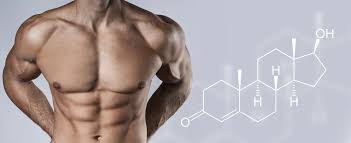
Testosterone Replacement Therapy (TRT) is a medical treatment for men with clinically low testosterone due to hypogonadism or aging. It helps restore energy, strength, mood, and sexual function but requires ongoing monitoring to balance benefits with potential heart, fertility, and prostate risks.
Key Takeaways
- TRT available via injections, gels, patches, nasal gels, buccal tablets, or pellets.
- Annual cost ranges from $1,200–$3,200, depending on delivery method and insurance coverage.
- Proven benefits include improved libido, muscle mass, mood, and bone strength.
- Risks include infertility, prostate issues, heart concerns, and red blood cell elevation.
- Regular testing for testosterone, hematocrit, and PSA every 3–6 months is mandatory.
- Not suitable for men planning fertility or with prostate/heart conditions.
- Healthy lifestyle choices can enhance or maintain testosterone levels naturally.
Types & Delivery Methods for Testosterone Replacement
There are several ways to receive testosterone therapy. Each method has its own pros and cons, and the choice depends on lifestyle, preference, and medical advice.
Let’s look at the main delivery options:
Injectable Testosterone
- Short-acting injections: These are given every 1 to 2 weeks, often using testosterone cypionate or enanthate.
- Long-acting injections: Such as testosterone undecanoate, these can last 10–14 weeks per shot but usually require a doctor’s visit for administration.
Pros: Long intervals between doses (for long-acting), fast action.
Cons: Pain at injection site, fluctuating hormone levels, need for regular appointments.
Transdermal: Gels and Patches
Gels: Applied daily to skin, usually shoulders or upper arms.
Patches: Worn on the body, changed every 24 hours.
Pros: Easy to use, steady hormone levels, no needles.
Cons: Skin irritation, possible transfer to others through skin contact, need for daily application.
Buccal Tablets and Nasal Gel
Buccal tablets: Small tablets placed against the gum, releasing testosterone over several hours.
Nasal gel: Pumped into each nostril, typically twice or three times daily.
Pros: Non-invasive, avoids needles or skin issues.
Cons: Gum irritation, need for multiple daily doses, taste issues (for tablets).
Subdermal Pellets
- Small pellets implanted under the skin, usually in the hip or buttock area, releasing testosterone for 3–6 months.
Pros: Very low maintenance, long-lasting effects.
Cons: Minor surgical procedure, risk of infection, difficult to adjust dosage quickly.
| Method | Frequency | Pros | Cons |
| Injectable | 1–14 weeks | Fast, effective | Injections, hormone swings |
| Gel/Patch | Daily | Easy, steady levels | Skin issues, daily use |
| Buccal/Nasal | 2–3 times/day | No needles | Frequent dosing |
| Pellets | 3–6 months | Set-and-forget | Minor surgery, less flexible |
Cost Overview for Testosterone Replacement Therapy
TRT costs can vary widely based on treatment type, provider, and insurance.
Here’s a practical breakdown:
- Annual cost range: $1,200 to $3,200, which is about $30–$500 per month depending on the method chosen.
- Medication cost: Injections tend to be cheaper than gels or pellets. Gels and patches may be $300–$500 per month without insurance.
- Lab tests: Regular blood tests are required to monitor levels and side effects, usually every 3–6 months. Each test can cost $100–$300 if not covered.
- Doctor fees: Office visits for prescriptions or injections can be $50–$200 per appointment.
- Insurance: Some plans cover TRT if it’s prescribed for hypogonadism, but not always for age-related low T.
- Telehealth offerings: Services like Ulo or Hims charge about $159/month for all-inclusive plans, which often bundle medication, labs, and online visits.
| Expense Type | Cost Range | Covered by Insurance? |
| Medication | $30–$500/mo | Sometimes |
| Lab Tests | $100–$300/test | Sometimes |
| Doctor Visits | $50–$200/visit | Sometimes |
| Telehealth (Ulo) | $159/mo | Usually out-of-pocket |
Clinical Benefits & Efficacy
Many men seek TRT for the potential improvements in quality of life. The benefits are well documented in clinical studies.
Here are some key benefits, explained in detail:
- Improved Sexual Health
TRT often improves sex drive, erections, and overall satisfaction. Several studies show better sexual performance and interest after a few weeks or months of treatment. - Better Body Composition
Research shows that TRT can increase muscle mass and decrease body fat, especially around the abdomen. Bone density may also improve, lowering the risk of osteoporosis. - Enhanced Mood and Energy
Studies report improvements in mood, reduced feelings of depression, and higher energy levels. Men often feel more alert and motivated. - Cardiovascular and Fracture Prevention
Evidence is mixed. Some studies show that TRT helps lower bad cholesterol and may reduce fracture risk by improving bone strength, but other studies warn of possible heart risks. Ongoing research continues to monitor long-term effects.
Key Risks & Side Effects of Testosterone Replacement Therapy

While many men benefit from TRT, there are important side effects and risks to consider. Below is a table outlining common and serious side effects, along with explanations.
| Side Effect | Explanation |
| Acne, oily skin | Skin may produce more oil, leading to pimples |
| Fluid retention | Some men notice mild swelling in ankles or feet |
| Local irritation | Skin or injection site may become red or itchy |
| Hematocrit elevation | More red blood cells can increase clot risk |
| Prostate issues | Can worsen benign prostate growth, requires checks |
| Cardiovascular risk | Studies show mixed results on heart attack or stroke |
| Sperm suppression | TRT can lower sperm count and cause infertility |
| Sleep apnea | May worsen breathing problems during sleep |
| Gynecomastia | Some men develop breast tissue |
| Mood changes | Possible mood swings or irritability |
Effectiveness: Guidelines & Monitoring
Staying safe on TRT requires following medical guidelines and routine monitoring. Here is what every patient should expect:
- FDA Approval for Hypogonadism Only
TRT is officially approved only for men diagnosed with low testosterone due to medical conditions, not just normal aging. - Regular Physician Monitoring
Blood tests should be done every 3–6 months. These tests measure testosterone levels, hematocrit (red blood cells), PSA (prostate marker), and cholesterol. - Stopping if No Improvement
If symptoms do not get better within 3–6 months, or if side effects are serious, your doctor may stop therapy. - Role of Lifestyle and Alternatives
Healthy habits like weight loss, exercise, sleep, and less alcohol can naturally boost testosterone. Herbal supplements have not proven as effective as TRT in scientific trials.
Decision-Making & Who Should Consider TRT
The choice to start TRT is personal. Not everyone with low testosterone symptoms is a good candidate.
- Ideal Candidates
Men who have clear symptoms of low testosterone and laboratory tests to confirm it benefit the most. Treatment works best when prescribed for medical reasons. - Who Should Not Take TRT
Men with prostate or certain heart problems, or those who want to father children soon, should not use TRT. The therapy can lower sperm count and may worsen some health risks. - Shared Decision-Making
Good TRT decisions are made with your doctor, weighing the benefits against risks and ongoing monitoring. Open conversations help ensure treatment is safe and effective.
Conclusion
Testosterone Replacement Therapy can help older men regain energy, improve mood, and feel better. The choice of delivery method, careful cost review, and regular check-ups all play a role in safe, effective treatment. Always consult with a healthcare professional, weigh the pros and cons, and use reliable clinics for the best results.
Working closely with an experienced doctor helps ensure treatment is both safe and effective. Reliable clinics provide clear information, appropriate testing, and ongoing support. Weighing the potential benefits against the risks and costs, and making informed decisions with a healthcare professional, leads to the best outcomes for men considering testosterone therapy in later life. Responsible, individualized care is key to maximizing results and minimizing complications.
Frequently Asked Questions
- How much does TRT cost each month?
TRT costs between $30 and $500 per month. The exact amount depends on the type of treatment, the clinic or provider, and whether your insurance covers any part of the expense. Gels and patches tend to be more expensive than injections. - Does insurance cover testosterone therapy?
Some insurance plans will cover TRT if it’s prescribed for a medical condition like hypogonadism. However, most plans do not cover testosterone therapy for normal age-related declines, so it’s important to check with your provider first. - Which TRT method is best for older adults?
Gels and patches are often chosen for their simple, painless application and steady hormone levels. However, the best method depends on personal health, preference, skin sensitivity, and your doctor’s recommendation after a full assessment. - How soon will I notice benefits from TRT?
Many men feel improvements in energy, mood, and sexual health within a few weeks of starting therapy. Maximum results can take several months, as the body gradually adapts to new testosterone levels. - Can TRT cause infertility or reduced sperm count?
Yes, TRT can suppress the body’s natural testosterone production and lower sperm count. This effect is often reversible after stopping therapy but may be permanent with long-term use. Men wishing to have children should discuss options with their doctor. - Is TRT safe for my heart and prostate?
The safety of TRT for heart and prostate health is still debated. Some studies suggest increased risks, while others do not. Regular monitoring with your doctor can help catch any problems early and reduce potential risks. - What lab tests are needed during TRT?
Doctors usually check testosterone levels, blood cell counts, PSA for prostate health, and cholesterol every three to six months. These tests help make sure therapy is working safely and allow for any needed adjustments. - Can healthy lifestyle changes boost testosterone without TRT?
Yes, losing weight, regular exercise, better sleep, and reducing stress can all help raise natural testosterone levels in some men. These changes may even reduce or delay the need for TRT. - What are warning signs of serious side effects?
If you notice unusual swelling, sudden headaches, difficulty breathing, chest pain, or severe mood changes while on TRT, contact your doctor immediately. These symptoms may signal serious complications and require prompt medical attention. - Can women use TRT?
TRT is not generally recommended for women except for rare hormone problems. When used, it should be closely supervised by a doctor, as dosing and side effects are different and risks may be higher for women.
Reference
- Harvard Health Publishing
- Cleveland Clinic
- Journal of Clinical Endocrinology & Metabolism
- Medical News Today
- Wall Street Journal
- Wikipedia
Dr. Ethan Ward, MD, is a board-certified urologist with over 12 years of clinical experience specializing in men’s health, hormone optimization, and sexual wellness. He earned his MD from Johns Hopkins University School of Medicine and completed his urology residency at Cleveland Clinic. Dr. Ward focuses on testosterone therapy, erectile function, and metabolic contributors to hormonal imbalance. His work includes peer-reviewed research on andropause management and patient-centered approaches to male vitality.

